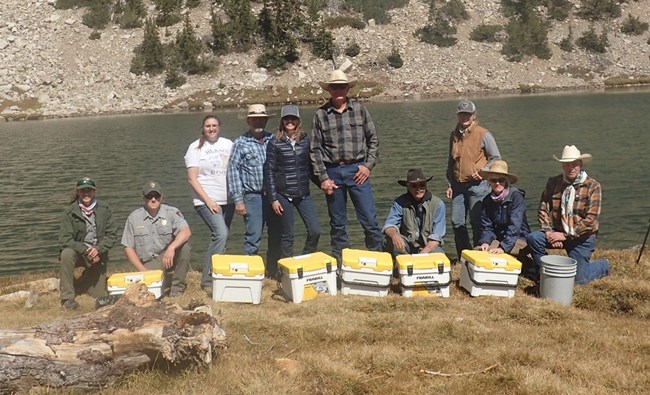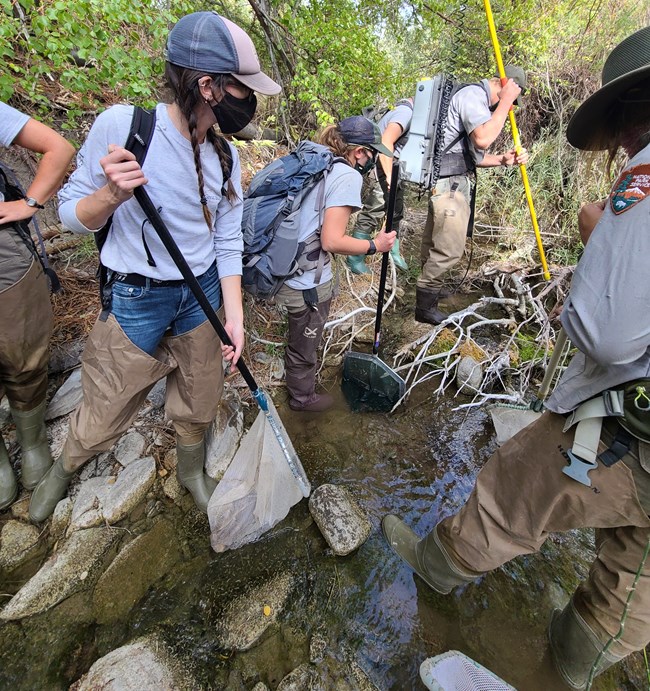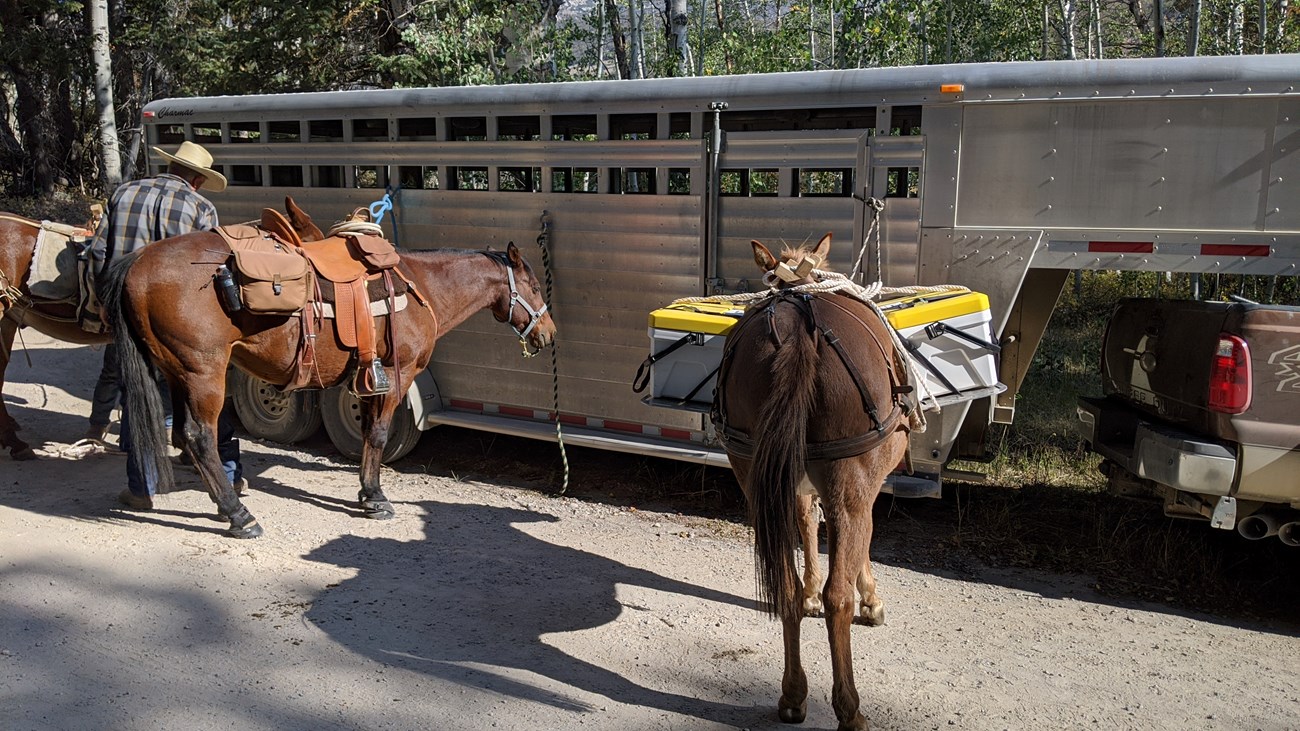Part of a series of articles titled The Midden - Great Basin National Park: Vol. 20, No. 2, Winter 2020.
Article
Creating a Refugium of Bonneville Cutthroat Trout
This article was originally published in The Midden – Great Basin National Park: Vol. 20, No. 2, Winter 2020.

NPS Photo by Julie Long
In March 2020, a project was initiated to create two new Bonneville cutthroat trout (Oncorhynchus clarkii utah, BCT) conservation populations in Baker and Johnson Lakes. Great Basin National Park hopes that these two high elevation lakes will act as a refugia for BCT as our climate continues to change.
The three most serious threats facing the Park’s BCT populations (beside the invasion of nonnative fishes) are drought, increasing temperatures, and catastrophic wildfires. Located over 10,500 feet above sea level, Johnson and Baker Lakes experience cooler air temperatures and more precipitation than the streams located thousands of feet below. Also, since the lakes are located near the edge of the tree line, the probability of a wildfire negatively affecting the lake populations is much lower than that of a fire negatively affecting any one of the BCT streams.

NPS Photo by Joey Danielson
Once everything was ready and the summertime temperatures began to decrease, Great Basin National Park partnered with Nevada Department of Wildlife (NDOW) to collect BCT from Hendry’s Creek, a stream located in the nearby North Snake Range.

NPS Photo by Meg Horner
Great Basin National Park would like to thank everyone that helped make the first year of this project a success. BCT could not have been collected and transported to Johnson Lake without collaborating with NDOW and the Back Country Horsemen of Nevada. Not only was the Johnson Lake fish move a huge success, but a new partnership was made and the Park looks forward to working with both NDOW and the Back Country Horsemen more closely in the future.
The Back Country Horsemen put together a video of the fish collecting event.
Last updated: February 7, 2024
